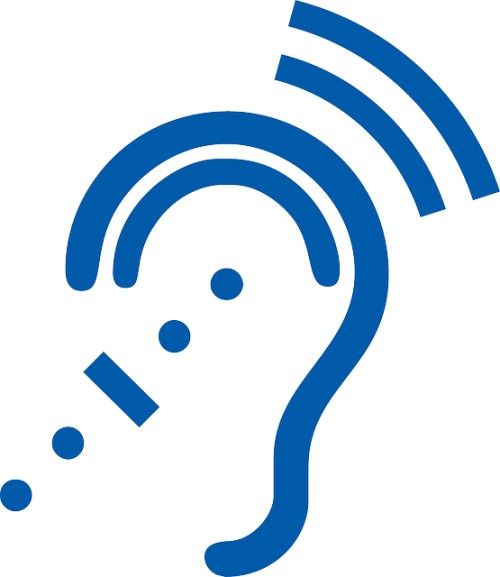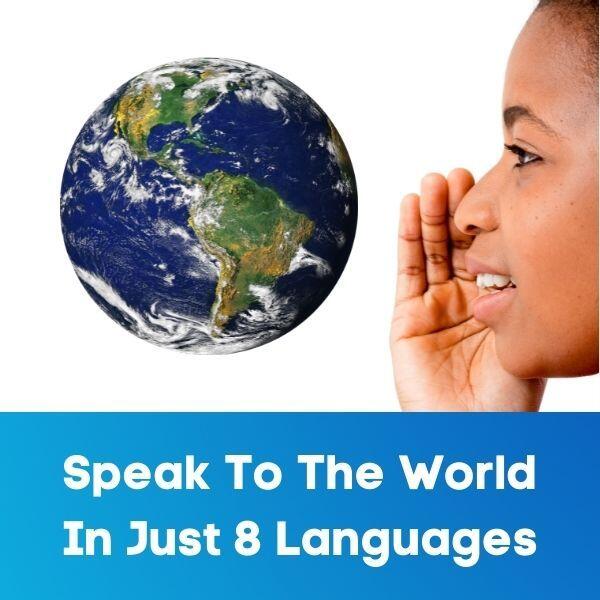Learning A New Language With A Disability – Dyslexia, Deafness, And ADHD
Having a disability will make learning a new language difficult, but certainly not impossible. The truth is, with the many ways that language can be taught and learned, someone with a disability has options as to the most suitable method for them.
Harder, but not impossible
No matter what disability you have, you can find a way to learn a new language, and reap the benefits therein. If you don’t believe me, you only need to look at the author, activist and lecturer Helen Keller, who was deaf and blind but learned to speak, sign, read Braille, and is said to have learned Latin, French and German!
She might be an extreme example, but she is proof nonetheless that anything is possible with determination and hard work.
Obviously, different disabilities will come with their own challenges and solutions in learning a second language. In this article I’ll cover dyslexia, deafness, and ADHD.
Learning a language with dyslexia
What is dyslexia?
Briefly, dyslexia is a neurobiological learning disability that causes difficulties in word recognition and the processing of written words and linking them to their sounds. People with dyslexia thus have trouble reading and writing in their own language, and as such would face problems learning a foreign language.
For this reason, some languages are said to be more difficult for dyslexic people than others. Languages that are less phonetic (not usually pronounced the way they’re written) present particular problems when learning them as a second language, because you might struggle to break the sounds down to their core components (phonemes) and associate them with their written form (graphemes).
However, many people with dyslexia do compensate for their reading and writing weaknesses with increased visual and problem-solving skills. This can be utilized when learning a new language.
Tips for language learners with dyslexia
Focus on speaking and listening
Language was created to be spoken, a way for humans to communicate, and thus not being able to read and write well will not prevent you from learning a language. You should focus on activities that involving speaking and listening.
The Michel Thomas course and method would be ideal, as there is no reading or writing involved, and you learn solely by listening and repeating. You can get a free trial to test out the course on Amazon’s Audible platform.
You should also listen to your target language often by playing the radio, music, and watching movies and TV. Get used to hearing the sounds and pronunciations.
Use the Listening-Reading method
The listening-reading method involves listening to target language audio whilst simultaneously reading its text. This can also be achieved with movies/TV shows and their accompanying subtitles. This way the audio representation of the written words will help you identify them more readily.
Use flashcards with sounds
Flashcards are great for using your heightened visual memory skills to associate pictures with words and their sounds. There are many free flashcard apps available on smartphone and tablet. Check the Android/Apple app stores for ones in your target language.
Choose a language that doesn’t use an alphabet
There is evidence to suggest that people with dyslexia have an easier time learning languages that use characters and not alphabets, as words are associated with symbols and not letters and phonemes. So a language like Mandarin might present fewer problems for a native English speaker with dyslexia than, say, French, a notoriously non-phonetic language.

Learning a language if you’re deaf
If you are deaf or hard of hearing, you will need to decide what your goals for your new language are, as this will influence which approach you take. Do you intend to communicate verbally, non-verbally or both?

TIPS FOR HEARING IMPAIRED LANGUAGE LEARNERS
Verbal communication
Auditory training
If your aim is to speak the language verbally, the process will be exactly the same as it would be if you learned to speak in your native spoken language. You’ll need auditory training from a native speaker of your target language, so you learn how to pronounce sounds properly.
Lip reading
You can learn to read lips, but this will require lots of time spent closely watching native speakers. A good way to practice this is by watching target-language entertainment with the subtitles as aids. You would benefit most from first watching and reading the subtitles, then rewinding and reading the lips, thereby putting the movements to the words.
Once you can copy the lip movements you see and combine them with your speech training in sound production, you will gradually learn to pronounce the foreign words you read.
Non-verbal communication – reading and writing
If your goal is to read and write, you would focus on grammar study, written courses and reading books.
The Teach Yourself language series are great for this, and come complete with exercises to test you at every stage. Grammar is introduced slowly and gradually, getting you used to new concepts at a steady pace. If you stick to the old, original books, you can pick these up very cheaply on Amazon and eBay.
You should use target language subtitles on movies/shows whenever you can, on both target and native language content. These will introduce new vocabulary in context, pairing visuals with words, helping you remember.

Spending a lot of time reading books will also build your vocabulary. You can get the best out of foreign books by writing translated words into the book in pencil, and keeping a notebook handy for jotting down important words and their meanings. In this post, Learning a language by reading books, I talk extensively about how to use reading to learn a language.
Finding language partners and pen pals will be possible, and should be used once you are comfortable enough to express yourself with words. With apps like Tandem and Interpals, you can communicate completely through written messages.
Learning a language as an adult with ADHD
Although not a disability per se, I’ve included it here because it does present its own challenges. A person with attention deficit hyperactivity disorder will find sitting down and concentrating for long periods of time tough, which would make language learning especially troublesome.
ADHD can also call problems with social interactions, which could hinder the language learning process even further.
Learning a new language requires lots of focus and attention, no matter which method you use to study, so you’ll need to find ways to combat the wandering attention span and possible social anxiety connected with the disorder.
TIPS FOR LANGUAGE LEARNERS WITH ADHD
Focus on fun

The best way to stop your attention from wandering is to make your language activities fun. Only you know what fun constitutes for you. But some activities are:
a) If you respond well to watching movies, then do that in your target language, and add subtitles so you can pick up both the sounds and words associated with the language
b) Play video games with target language audio and subtitles. Several video games across different platforms come with dubbing, though most only include subtitles
c) Use gamification apps like Duolingo and flashcard apps that are visually appealing and designed to be used in short bursts
d) Talk to people, if you enjoy socializing. You can find language exchange partners on Tandem and other pen pal apps
Study in short, regular bursts
It is a well-known fact that the most effective way to study is in short, condensed timeframes of roughly 25 minutes, after which time our minds begin to wander, and the amount of information we retain decreases dramatically. Regular breaks when doing less interesting study will reduce the impulse to lose focus and give up.
Talk to yourself
If you have social anxiety, as many adults with ADHD often do, communicating with others in whatever form it takes, can be a struggle. Now, in order to become truly fluent in a language, some level of communication with natives will be necessary, but you can hold off on that for a while by speaking to yourself when you’re alone.
Speak often; if you know the word in your target language, always use it. You should couple this with regularly listening to how the language is used so that you don’t make any lasting pronunciation mistakes that no one is around to correct.
Conclusion
Having a disability will increase the time it takes you to learn a second language, there is no denying that. It might also involve an adjustment to the way you’ve previously learned things, as language learning is an epic undertaking unlike any other.
But it can be done, and successfully, with focus and will. Your disability might actually give you certain benefits when it comes to language learning, as we’ve seen with things like enhanced problem-solving skills and visual and creative acuity. Use these things to your advantage and first work on the language skills that are the easiest for you to nurture.







